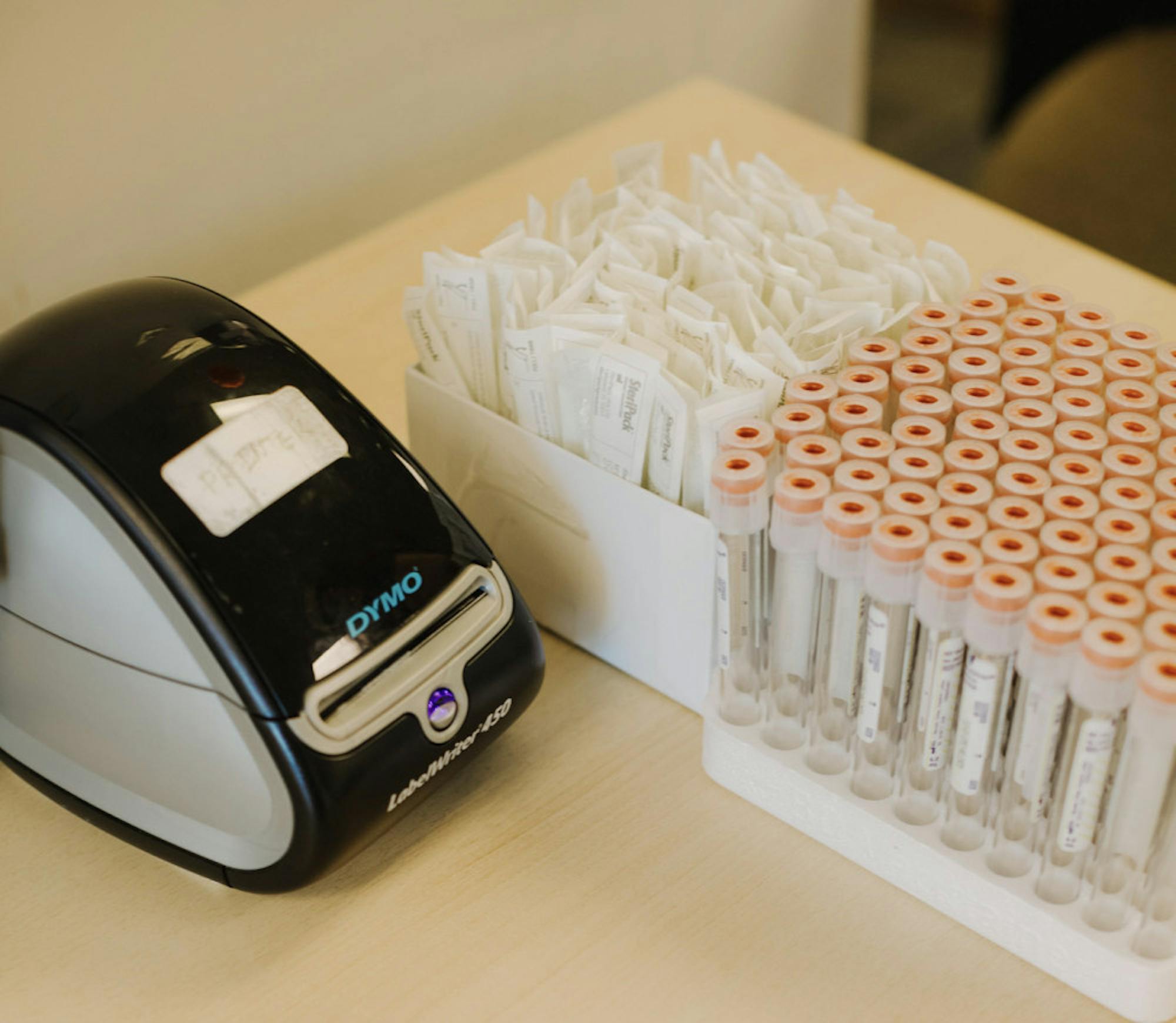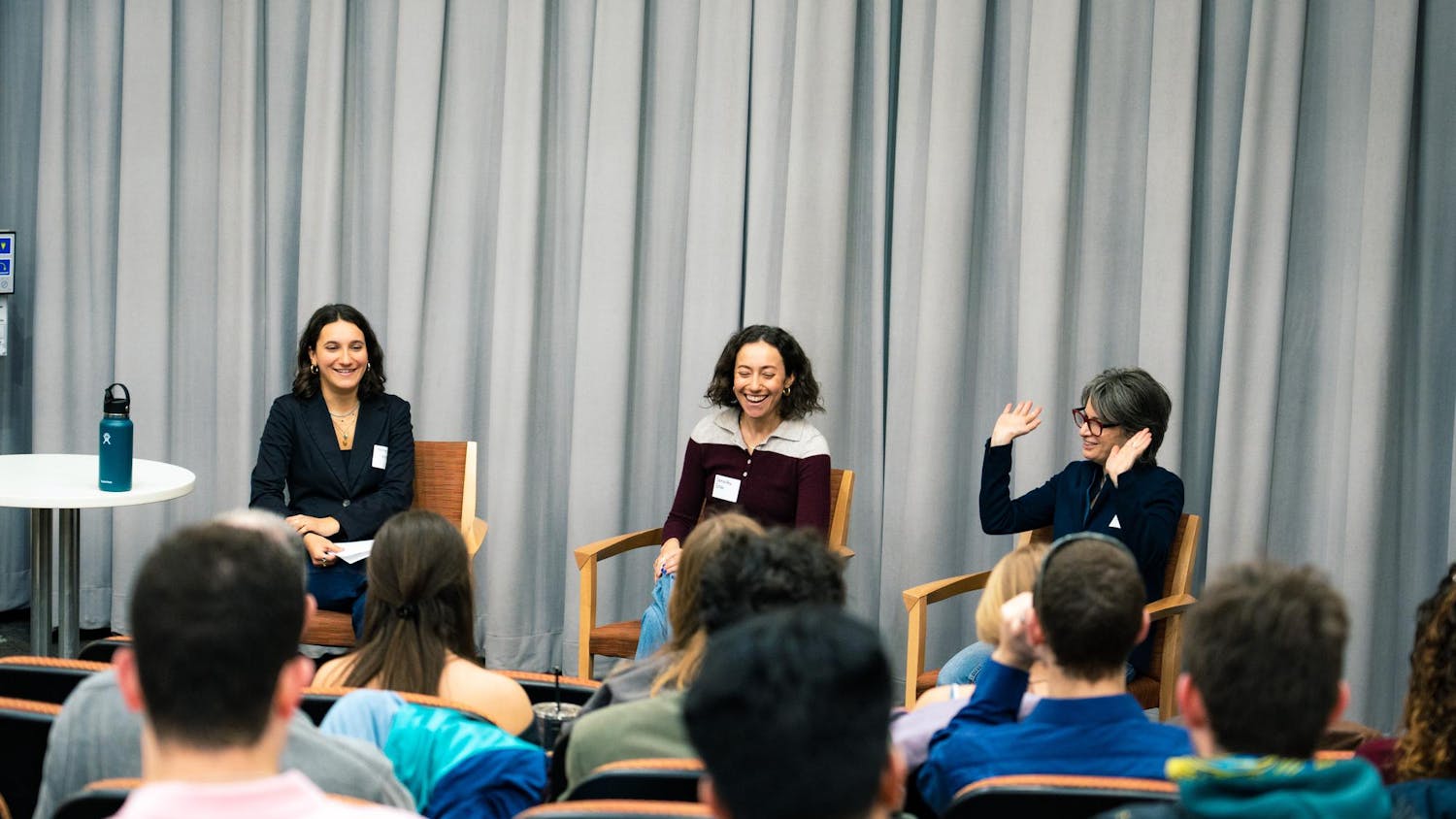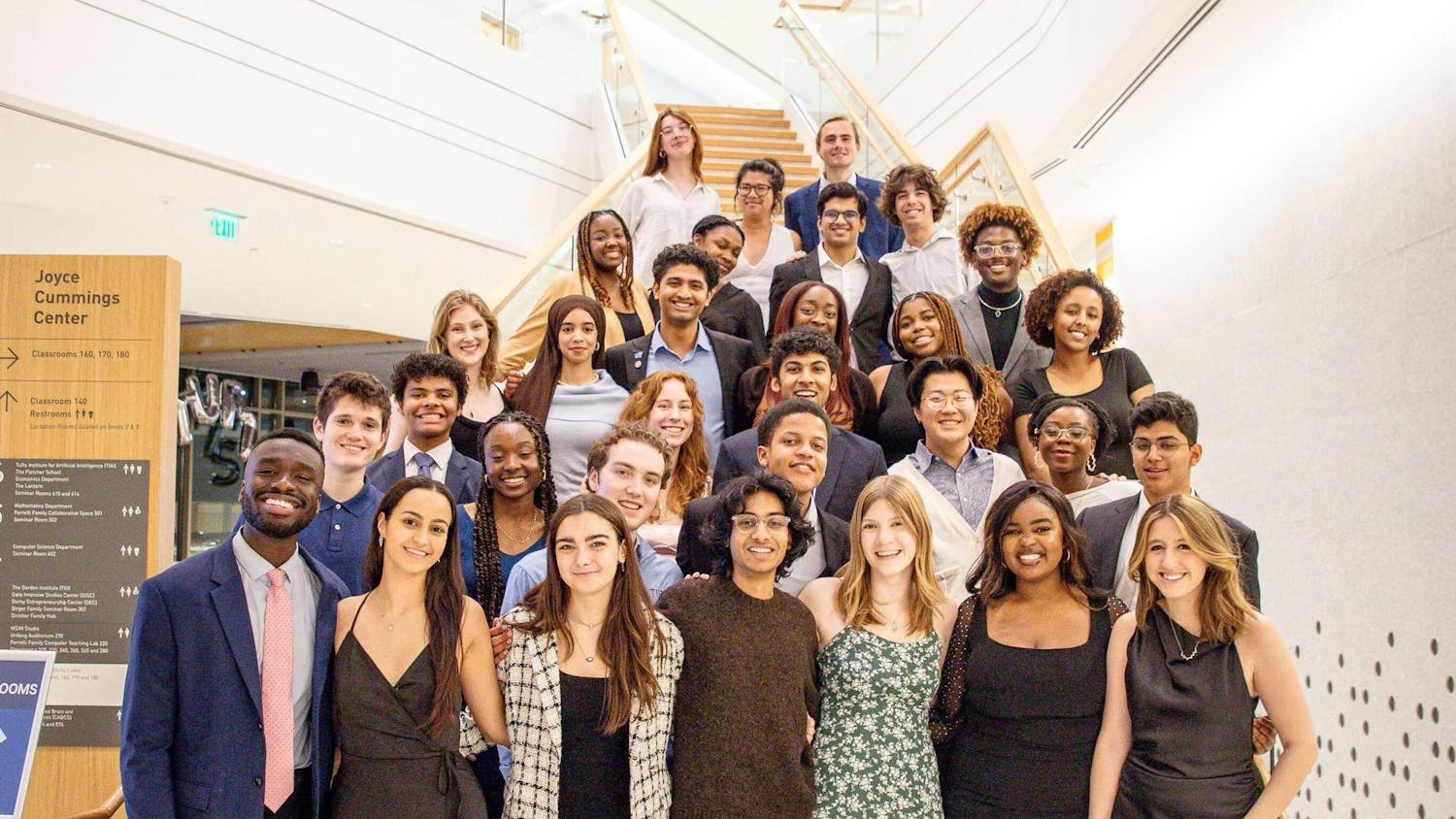Although COVID-19 testing has been required twice a week for Tufts community members, including students, faculty and staff since the beginning of the school year, the procedure has changed multiple times.
In recent weeks, the procedure that was originally used at the beginning of the school year was readopted. When a student enters the testing center, they scan their ID card and hand it to an attendant, who checks their picture and their date of birth. The attendant prints out a barcode with the student's information and attaches it to the test tube.
Marie Caggiano, medical director of Health Service, emphasized the pressure on Health Service to ensure testing is going smoothly and the process is working well.
“The Health Service is responsible for reviewing all the test results for students on the Medford/Somerville and SMFA campuses,” Caggiano wrote in an email to the Daily.
In the past, however, there was a more independent system in place, where students scanned their IDs and attached their printed barcodes to their own tubes without the assistance of the attendants.
The shift from this system now requires staff to be more attentive and creates more traffic, as it takes longer for each student to proceed when their photo and date of birth have to be checked.
“We have an obligation to ensure the accuracy of our testing program, which includes ensuring that the tests being submitted are accurately connected to the individual taking the test,” Caggiano said.
There have been rumors about security concerns with the independent testing procedure, hence the switch to the new method. However, Caggiano explained that this is not the case; the switch is just part of the Health Service’s responsibility to make sure all testing is accurate.
However, the system is not flawless. Sophomore Katherine Barrasso reported that when she went to get tested, the attendant was not sure the photo on her ID card was her.
“I scanned my ID and [the attendant] said, ‘Do you have a picture that looks more like you? Do you have another form of ID?’ I showed her my driver’s license and then she asked for my birthday,” Barrasso said.
Barrasso said she was happy to comply but was caught off guard.
“I was a little confused, like, what would happen if you didn’t have another form of identification?” Barrasso said.
With cases on the rise in Massachusetts, including the university's host communities of Medford and Somerville, Health Service’s responsibility in this area is heightened. Caggiano underscored the increased importance of testing to make sure the positivity rate on campus stays low.
“We are taking extra care across the board with all elements of our COVID-related health and safety measures including making sure we are all following social distancing, masking, hand hygiene, and testing protocols,” Caggiano said.
Patrick Collins, executive director of media relations, said the spring testing program has not been finalized, but information will be communicated when available. It should not look too different from the system in place now.
“We will continue to use The Broad Institute and work with them closely to ensure an accurate and efficient testing process for our community,” Collins wrote in an email to the Daily.






